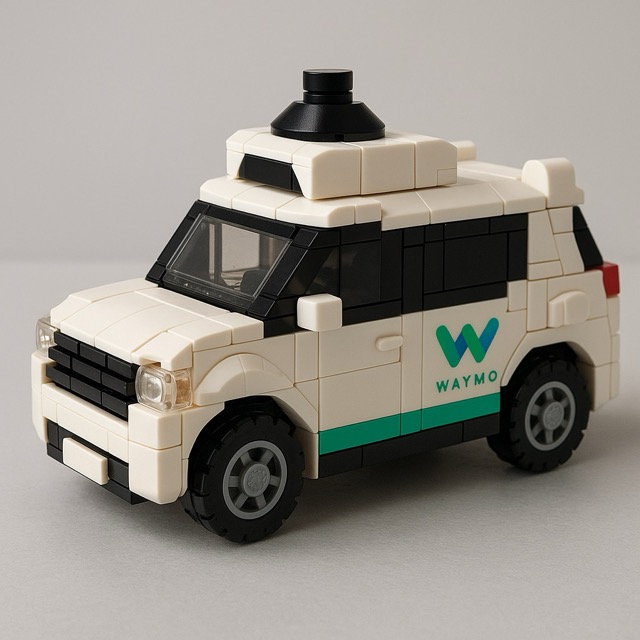Isomorphic Labs: Can AI Drug Discovery Help Alphabet’s (GOOGL) Next Growth Phase?
Alphabet (GOOGL), the tech behemoth behind Google, is constantly seeking new frontiers for growth. While search, cloud, and advertising remain core pillars, its “Other Bets” segment holds ventures with potentially transformative impacts such as Waymo. One of the most intriguing is Isomorphic Labs, an AI-first company aiming to revolutionize the world of drug discovery.

What is Isomorphic Labs?
Launched publicly in late 2021, Isomorphic Labs is an Alphabet subsidiary born from the groundbreaking AI research conducted at DeepMind (now Google DeepMind). Led by DeepMind co-founder and Nobel laureate Sir Demis Hassabis, its mission is bold: to reimagine the entire drug discovery process using artificial intelligence.
Traditionally, developing new medicines is incredibly slow, expensive, and prone to failure, often taking over a decade and costing billions. Isomorphic Labs aims to dramatically shorten timelines and improve success rates by applying AI to understand complex biology and design novel therapeutics. They operate with an “AI-first” philosophy, distinct from the traditional “lab-in-the-loop” approach.
The Technology: Beyond AlphaFold
The foundation of Isomorphic Labs lies in the success of DeepMind’s AlphaFold, an AI system that achieved remarkable accuracy in predicting protein structures. Isomorphic Labs leverages this and builds upon it with newer models like AlphaFold 3, co-developed with Google DeepMind.
AlphaFold 3 goes further, predicting the structures and interactions of not just proteins, but also other critical biomolecules like DNA, RNA, and ligands (small molecules that bind to proteins, often the basis of drugs). This predictive power, combined with other proprietary AI models and Alphabet’s massive computational resources via Google Cloud, allows Isomorphic Labs to:
- Model biological systems: Understand disease mechanisms at a molecular level.
- Identify drug targets: Pinpoint specific biological targets for intervention.
- Design novel molecules: Create potential small-molecule drugs computationally.
- Predict efficacy: Simulate how potential drugs might interact within the body.
They aim to significantly reduce the iterations needed in drug design, potentially cutting the initial discovery phase from 5-10 years down to 1-2 years.
Market Opportunity & Financial Potential for GOOGL
From a finance perspective, the potential here is enormous. The AI in drug discovery market is projected to grow substantially, with estimates reaching tens of billions of dollars within the next decade.
- Revenue Streams: Isomorphic Labs’ primary model involves strategic partnerships with major pharmaceutical companies. They receive upfront payments, milestone payments based on R&D progress, and royalties on eventual drug sales.
- High-Value Deals: They’ve already secured a significant deal with Eli Lilly, potentially worth over $1.7 billion in milestones plus royalties. This deal validates their platform and provides non-dilutive funding.
- Impact on “Other Bets”: Success could turn Isomorphic Labs into a major contributor to Alphabet’s “Other Bets” revenue, which is already showing strong growth. Demis Hassabis himself envisions Isomorphic Labs becoming a multi-$100 billion business.
- Strategic Importance: It represents a major push by Alphabet into the lucrative healthcare sector, leveraging its core AI strengths.
Partnerships Driving Progress
The collaboration with Eli Lilly is crucial. This partnership focuses on discovering small molecule therapeutics against multiple disease targets. Isomorphic Labs provides the AI platform, while Lilly brings disease expertise and clinical development resources. This signals positive momentum and validates the potential of Isomorphic’s approach.
Risks & Challenges for Investors
Despite the promise, significant hurdles remain:
- Clinical Trials: AI-designed drugs must still pass rigorous, lengthy, and expensive human clinical trials. Success is never guaranteed in drug development.
- Scientific Validation: While AlphaFold is impressive, the real test is translating computational designs into safe and effective treatments. Early results comparing AlphaFold 3 to older methods on specific targets have shown limitations.
- Competition: The AI drug discovery space is increasingly crowded, with established players like Schrödinger and well-funded startups like Exscientia and Recursion Pharmaceuticals.
- Regulation: The regulatory landscape for AI-developed drugs is still evolving.
- “No-Lab” Dependency: Their reliance on Contract Research Organizations (CROs) for experimental validation introduces external dependencies.
Conclusion: A High-Risk, High-Reward Bet for GOOGL
For Python for Finance enthusiasts analyzing GOOGL, Isomorphic Labs represents a fascinating, high-risk, high-reward venture. Its deep integration with Google DeepMind’s AI prowess and Google Cloud’s infrastructure gives it unique advantages. Success could unlock substantial new revenue streams for Alphabet and position it as a leader at the intersection of AI and healthcare. However, the inherent risks of drug development cannot be understated.
Monitoring Isomorphic Labs’ progress, particularly the outcomes of its partnerships and upcoming clinical trials (with the first potentially starting this year), will be key to assessing its long-term value contribution to Alphabet. It’s a complex equation, but one that could significantly shape GOOGL’s growth narrative in the coming years.
Further Reading:
- Isomorphic Labs Official Website
- Isomorphic Labs on Google Cloud
- Isomorphic Labs and AlphaFold 3
- Details on Lilly Collaboration (PR Newswire)
Disclaimer: This article was prepared with the assistance of artificial intelligence. The information provided in this article is for informational purposes only and should not be considered financial or investment advice. Investing in stocks involves risk, including the potential loss of principal. Always conduct your own thorough research and consult with a qualified financial advisor before making any investment decisions.





